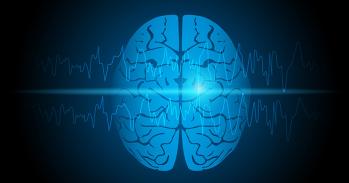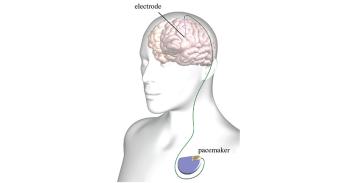A major new drive to understand, diagnose and treat Alzheimer’s disease has begun in Cambridge.
A major new drive to understand, diagnose and treat Alzheimer’s disease has begun in Cambridge.
The programme aims to lay the basis for both the development of biological markers to detect disease at an early stage, before widespread damage has occurred, and the creation of effective therapeutics.
Funding from the Wellcome Trust (WT) and Medical Research Council (MRC) has been announced for a £5 million research programme on Alzheimer’s disease (AD) in Cambridge. The programme, which is led by Professor Peter St George-Hyslop in the Cambridge Institute of Medical Research and Department of Clinical Neurosciences, is a major collaborative effort involving 15 scientists from seven research departments across Cambridge. The programme also involves scientists from the University of Bristol, the Max Planck Centre for Structural Molecular Biology in Germany and the University of Toronto in Canada.
AD is an increasingly common neurodegenerative disease of the brain that affects individuals in mid-to-late life, impairing intellectual function and memory. The disease, which is incurable, results when certain proteins in the brain become misfolded and form tangled masses that are toxic. The resulting progressive loss of cells in the brain gradually incapacitates patients for up to a decade before death. The incidence of AD is on the increase as populations live longer: in the UK, 700,000 people currently live with dementia, half of whom have AD; in 30 years' time, the estimates are that this number will have hit 1.4 million and be costing the UK economy £50 billion per year.
Professor St George-Hyslop explained the unique challenge the disease poses: ‘Although AD has been known about for over a century, it’s such a complex disease that attempts to understand the underlying mechanism using conventional tools have yielded confusing and conflicting answers. As a consequence, there is currently no drug that can halt its progression.’
To plug the gaps in knowledge, the interdisciplinary research programme builds on a collaboration that has been growing for several years in Cambridge, as co-investigator Professor Chris Dobson from the Department of Chemistry explained: ‘A fascination with how the fundamental molecular events that underlie AD relate to what is happening in living systems has brought together a group of people with interests that range from theory to therapy.’ The consortium pulls in expertise from biochemistry, genetics, clinical neuroscience, medical genetics, chemistry, chemical engineering, neurophysiology, physics, biophysics and pathology.
The programme aims to lay the basis for both the development of biological markers to detect disease at an early stage, before widespread damage has occurred, and the creation of effective therapeutics. ‘Already, the consortium is working well. The atmosphere takes alight as people throw in ideas about novel experimental approaches using tools from both physical and life sciences that would not have been possible until very recently,’ said Professor St George-Hyslop.
Professor Patrick Sissons, Head of the School of Clinical Medicine and Regius Professor of Physic, added: ‘This initiative exemplifies the power of collaboration between internationally leading investigators who can look beyond their individual spheres, and work at the boundaries of traditional disciplines to bring new insight to a notoriously complicated disease.’
For more information, please contact Professor St George-Hyslop (phs22@cam.ac.uk).
This work is licensed under a Creative Commons Licence. If you use this content on your site please link back to this page.





